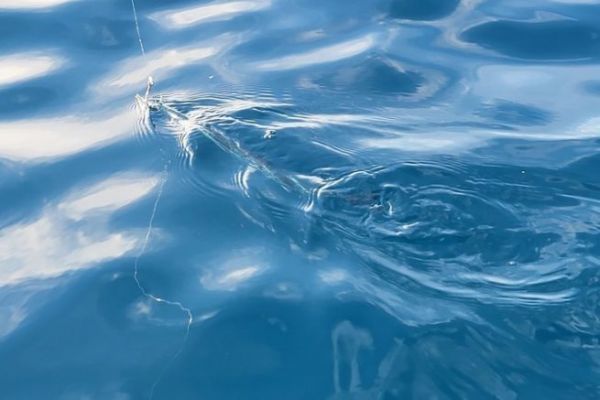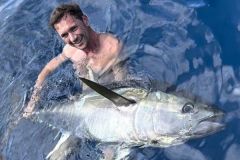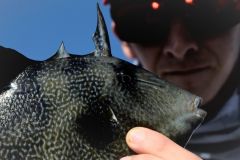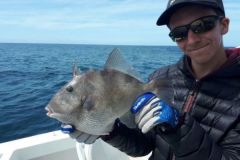Choosing and preparing the raw material
The garfish is a fine, fast fish, ideal as a livebait as its dynamic swimming attracts many predators. Tassergals and barracudas are particularly fond of them. The hook must be set carefully, often just under the skin of the back at the level of the dorsal fin, to preserve its natural mobility in the water and maximize attractiveness.
Technique used on board
Cable car fishing
When fishing with livebait close to the bank (such as the "cableway" technique), it is important to keep the line taut with the rod raised to allow the livebait to swim freely away from the angler, giving a good angle of action. On gently sloping bottoms, use short casts to keep the line taut.
The right assembly
The most effective way to bait a live garfish is with a light, slender rig, as the garfish moves on the surface, just below the layer of water.
- Two-shaft rig for shore fishing: we recommend a rig with two long shafts (about 2 metres each), which maximizes length while maintaining good balance and casting ease.
- Fine, light line: use a fine nylon for the line body (around 35/100) and even finer for the shanks (20/100 maximum) to keep the line light and the hooks almost at the surface.
- Small, fine hooks: opt for small hooks (maximum number 6) so as to be able to bait the garfish by its narrow beak without unduly injuring it.
- Improved buoyancy: to help keep hooks close to the surface, a small white or blue floating pearl, sometimes glittery, can be added just behind the high stack hook.
- Precise baiting: garfish are usually baited by pricking the hook under the skin of the back at the dorsal fin, allowing the fish to swim freely and remain attractive to predators.
- Rotation and anti-entanglement: the addition of a small roller (rotary staple) between the line body and the stakes enables multidirectional rotation and reduces the risk of entanglement.
This rig, combined with a float adjustment to present the bait about 50-60 cm below the surface, is ideal for surfcasting or pole fishing for garfish in summer.
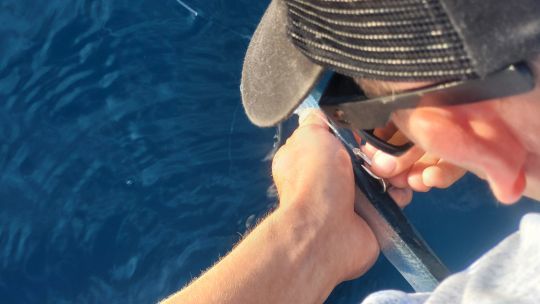
Slow trolling
From a boat or kayak, the garfish is also used for slow trolling, notably to target amberjack, tassergal or denti. The boat sails at slow speed, generally between 1 and 2 knots, dragging the garfish behind.
The typical set-up is called "steward", with two hooks in a row: a "tractor" hook set in the nose of the fish, and a second on the back to maximize the chances of capture. Depending on the size of the fish and the target, you can vary the hook size (e.g. size 1 to 5/0) and use single or treble hooks. For very large fish, a third hook can be added.
Additional tips
Make sure your lively body is vigorous, and keep it well oxygenated throughout the session.
Position the rod in a high dive for better line hold and optimal control of the fish's movements.
If necessary, use gentle animation with pauses to simulate a vulnerable fish, which encourages predator attacks.
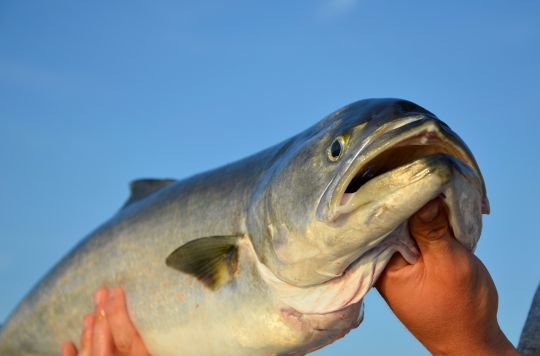
Fishing with a live garfish requires precise rigging (hook set just below the skin of the back), good line tension management (rod lifted, line taut), and adaptation to the slope of the bottom so that the live fish swims freely. This technique is very popular with large predator anglers in the Mediterranean.

 /
/ 